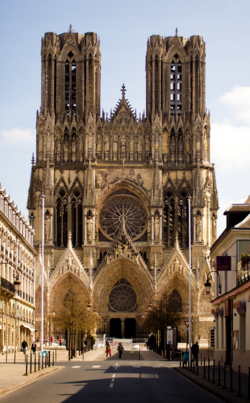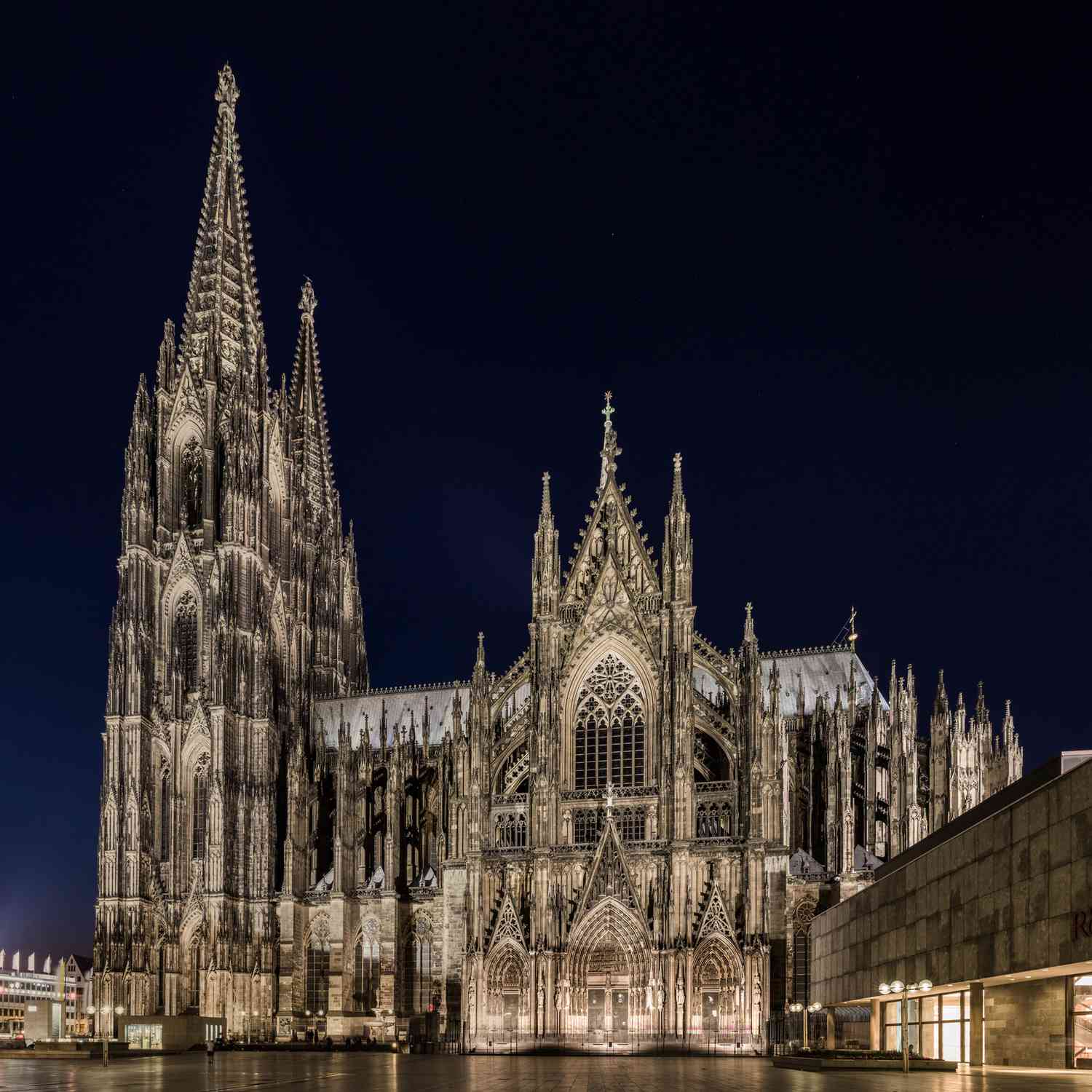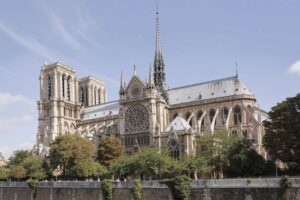A Look at the Heavenly Aspiration
Gothic architecture is more than just a way to make things; it’s a huge example of mediaeval faith and creativity. This revolutionary architectural trend started in France in the 12th century as a continuation of the Romanesque style. It changed cathedrals from dark, fortress-like buildings to airy sanctuaries full of light. Renaissance detractors called the style “Gothic” as a way to insult it, saying it was a “barbarous” departure from classical Roman forms. But this architectural marvel, which was first termed Opus Francigenum (“French Work”), would shape the landscape of Europe for hundreds of years. It is a group endeavour to make a physical location that could boost people’s spirits towards the divine.
The Development of the Gothic Style
Gothic architecture didn’t just happen immediately; it grew throughout time, with each new style building on the last.
Early Gothic (around 1140–1200)
The style started in the Abbey Church of Saint-Denis near Paris, where Abbot Suger wanted to build a new church that would boost people’s spirits. He was the first to use the pointed arch and ribbed vault in the choir and ambulatory. These features made it possible to build taller, lighter walls and put in massive stained-glass windows, which was a big change from the thick, heavy Romanesque walls. This early stage has a four-part elevation: arcade, tribune, triforium, and clerestory.

Early English; choir of Canterbury Cathedral (1174–1180)
High Gothic (c. 1200–1300)
Many people think that this time was the height of Gothic architecture. Builders got really good at using flying buttresses, which are outside arches that move the high ceilings’ outward force to a pier. This new idea made the inside walls less important, so they could be almost completely replaced with stained glass. To make the building taller, the elevation was cut down to three stories: an arcade, a triforium, and a clerestory. The outcome was a magnificent focus on verticality and light, making the rooms feel light and airy. The Chartres Cathedral and the Reims Cathedral are two of the best specimens of the High Gothic style.

High Gothic west front, Reims Cathedral (1211–)
Late Gothic (about 1300 to 1500)
In the latter phase, people started to like more elaborate decorations and flashy designs. In France, this style was called “Flamboyant” because it had beautiful tracery, or stone latticework, that looked like flames flashing. Vaults got more complicated, with decorative ribs and star-shaped patterns that weren’t just for support anymore. During this time, the style also expanded from ecclesiastical buildings to public buildings.
Sainte-Chapelle de Vincennes (1370s)
The Defining Traits and Their Importance
The visual and structural parts of Gothic architecture had both practical and symbolic purposes, coming together to give people a sense of the divine.
Arches with points and ribbed vaults
The pointed arch, on the other hand, made it easier to spread out weight than the round arches of the Romanesque period. It pushed the building down instead than out, which let architects design walls that were taller and stronger. The pointed arches and the ribbed vault, which had diagonal ribs that spread the weight of the roof across the roof, worked together. This dynamic combination was the secret of Gothic architecture’s tall buildings.
Flying Buttresses
These outside half-arches were a brilliant example of mediaeval engineering. They were quite important for the thin, high walls because they fought against the lateral strains of the massive roof and vaults. This made it possible for the huge, unbroken window space that is a hallmark of Gothic style. The flying buttresses are a visual proof that this style combines form and function.

Flying buttresses of Notre Dame de Paris (c. 1230)
Rose windows and stained glass: Divine Light
The most important thing in a Gothic cathedral was light, which stood for God’s presence. Stained glass windows changed the boring sunshine into a colourful kaleidoscope, giving the space a spiritual, otherworldly feel. Abbot Suger famously said that “the dull mind rises to the truth through material things.” These windows, which typically showed stories from the Bible, were like “visual sermons” for people who couldn’t read. The rose window is a huge, round stained-glass window that is usually situated on the front of the building. It shows the Virgin Mary and is a focal point of divine beauty.
Gargoyles and Grotesques
These strange, scary animals that decorate the outside of Gothic cathedrals served two purposes. Gargoyles, which come from the French word gargouille, which means “throat,” were practical waterspouts that were meant to keep rainfall from eroding the stone walls. The other figures, called grotesques or chimaeras, were just for show. People thought that both would keep bad spirits away, keep the church safe from the outer world, and remind people of the spiritual perils that were outside of the church.
Gothic Era Masterpieces
Paris’s Notre-Dame Cathedral
Notre-Dame is a great illustration of the change from Early to High Gothic. Its beautiful rose windows, iconic twin towers, and harmonious façade are all well-known. It was able to be so tall and have such a big nave because it used a lot of flying buttresses. The cathedral’s doors are full of scriptural sculptures that taught and inspired those who went to church in the Middle Ages.
The Cathedral of Chartres
Chartres is sometimes regarded the best example of the High Gothic style since it is so well-preserved. It still has more than 170 of its original 13th-century stained-glass windows, which make for an unmatched show of filtered divine light. The floor of the cathedral also has a famous labyrinth, which is a path for meditative wandering that represents a pilgrimage to the Holy Land.

Chartres Cathedral Chartres Cathedral, France
The Cathedral of Cologne
This German work of art shows how Gothic design can last through time. It took more than 600 years to build, starting in 1248 and finishing in 1880. It is a beautiful example of the Rayonnant Gothic architecture, which is recognised for its tall, straight lines and intricate stonework. It is the biggest Gothic church in Northern Europe, and when it was finished, it was the tallest building in the world.

Cathedral of St. Peter, Geneva.
A Legacy That Will Last
Gothic architecture has had an effect on many things since the Middle Ages. The Gothic Revival style in the 19th century was motivated by its focus on verticality, dramatic use of light, and complex ornamental features. This trend led to the building of famous buildings like the Palace of Westminster and St Patrick’s Cathedral in New York. The style’s lasting impact comes from how it can make people feel wonder and devotion. It reminds us of a period when art, religion, and engineering came together to make buildings that really stretched for the sky.
For more blogs like this CLICK HERE!
References
Gothic architecture | Characteristics, Examples, & Facts | Britannica






